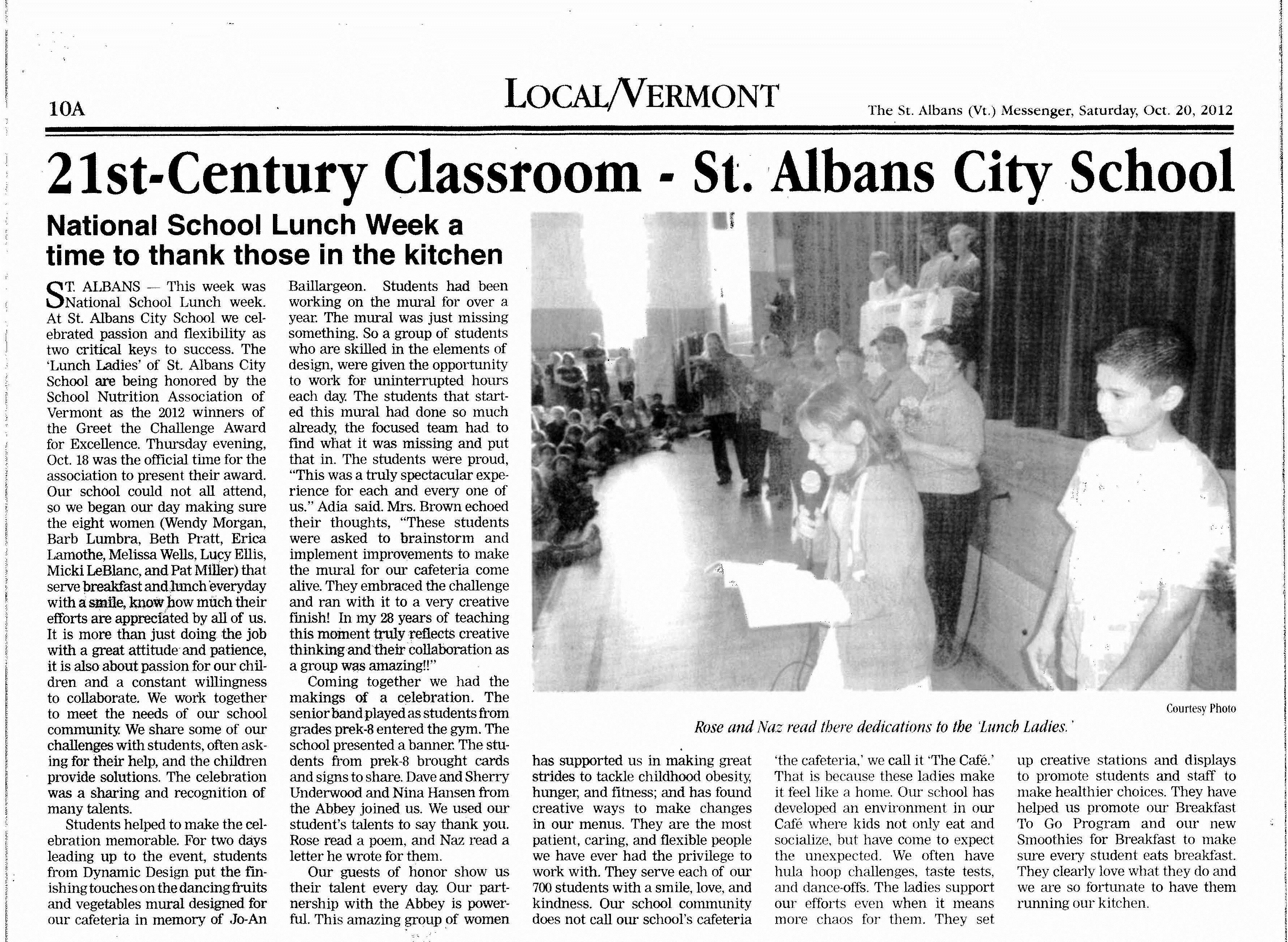October’s Veggie of the Month is Broccoli
The Windham County Farm to School is at it again with their celebration of a different vegetable every month. Back again this year to represent October is Broccoli. Please enjoy the following fun facts about broccoli provided by the Windham County Farm to School!
Fun Facts
Broccoli is in the Brassica plant family, along with its siblings: cauliflower, kale,
cabbage, collards, turnips, rutabagas, Brussels sprouts, and Chinese cabbage. These
vegetables all have similar flowers with four petals. The flowers resemble a small cross,
which explains why these vegetables are also called crucifers.
Broccoli originated in the Mediterranean area, probably in Turkey, and was popular as
far back as the Roman Empire, two thousand years ago. Although broccoli was grown
in the U.S. by Thomas Jefferson in his garden more than 200 years ago, it didn’t
become popular until the 1920’s. That’s when the D’Arrigo brothers came from Italy with
their broccoli seeds. They started a farm in California and soon were growing lots of
broccoli and shipping it as far away as Boston. The name ‘broccoli’ comes from the
Italian word brocco and the Latin bracchium meaning arm, branch, or shoot.
Broccoli is essentially a large edible flower. The head of broccoli is a collection of many
small green flower buds called florets; if you wait too long to harvest broccoli these
florets will open up and become yellow flowers. The flower stalk that holds up the head
is quite edible, and both the head and stalk of broccoli can be eaten raw or cooked. The
bitter leaves that grow below the head are not usually eaten but they are edible and can
be stir fried like other greens such as kale. If you like broccoli, try broccoflower, which is
a cross between broccoli and cauliflower. Broccolini, also called baby broccoli, is
another new vegetable; it’s a cross between broccoli and kale.
Ninety percent of the broccoli grown in the U.S. comes from California. However, a lot of
other states grow broccoli, too – just not as much. Broccoli prefers cool growing
conditions, between 40 and 70 degrees Fahrenheit, and moist soil. The heads are ready
to harvest in about 100 to 120 days after planting the seeds.
Broccoli is one of the nutritional giants of the vegetable kingdom. It is high in vitamin A
and contains beneficial compounds like carotene and folic acid. A cup of cooked
broccoli has as much calcium as four ounces of milk, and also provides ten percent of
the daily recommended iron requirement. If that’s not enough to convince you to eat
your broccoli, one cup of cooked broccoli also has as much vitamin C as an orange.
By: Vern Grubinger
